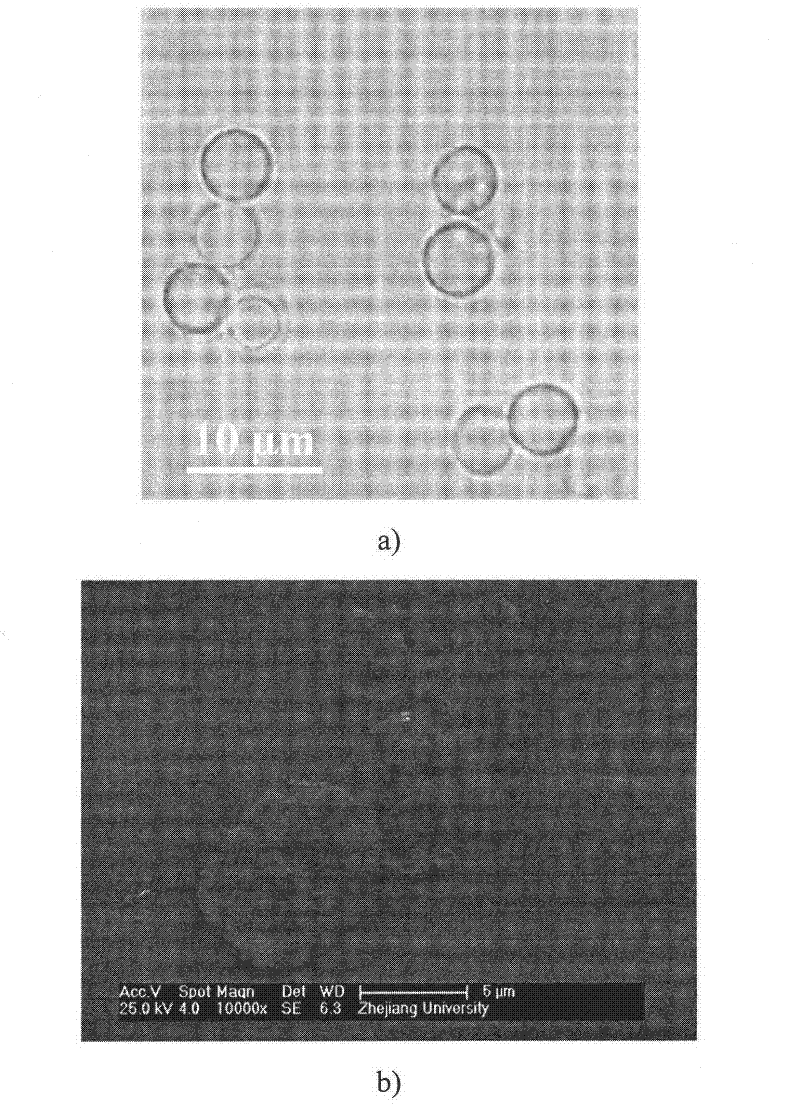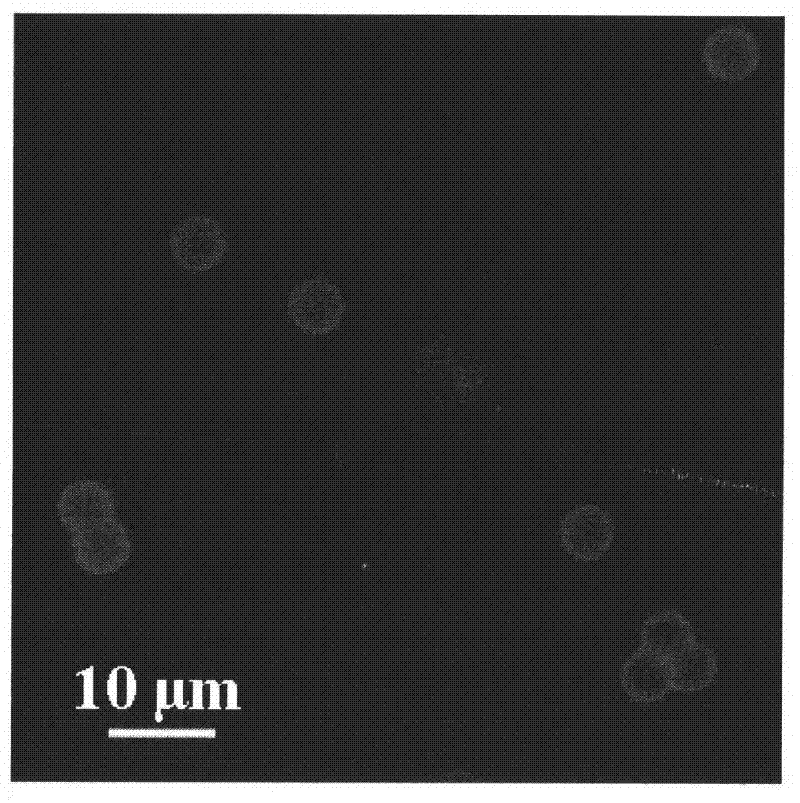A method for preparing hollow microcapsules based on the specific interaction between concanavalin and glycogen
A technology of concanavalin and microcapsules is applied in the field of preparing hollow microcapsules based on the specific interaction between concanavalin and glycogen, which can solve the problems of difficult to find pH environment, easy inactivation, high price, etc. Good application prospects, good biocompatibility and degradability, low cost of raw materials and stable effects
- Summary
- Abstract
- Description
- Claims
- Application Information
AI Technical Summary
Problems solved by technology
Method used
Image
Examples
example 1
[0025] 1) Add CaCl to the tris-hydrochloric acid (Tris-HCl) buffer solution with a pH value of 7.8 and a concentration of 0.05 mol / L 2 with MnCl 2 , so that the buffer contains 1mmol / L Mn 2+ and 1mmol / L Ca 2+ , using the buffer as a solvent to prepare a concanavalin solution with a concentration of 0.2 mg / ml and a glycogen solution with a concentration of 1 mg / ml;
[0026] 2) Add 40 mg of calcium carbonate colloidal particles to 4 ml of a polyethyleneimine solution with a concentration of 4 mg / ml, a pH value of 7, and 0.5 M NaCl, and centrifuge and wash with water after oscillating and absorbing;
[0027] 3) Disperse the particles obtained in step 2) in the concanavalin solution of step 1), oscillate for adsorption and centrifuge wash with tris-hydrochloric acid buffer solution with a concentration of 0.025 mol / L to obtain a surface-assembled layer particles of concanavalin molecules;
[0028] 4) Disperse the particles obtained in step 3) in the glycogen solution of step 1...
example 2
[0031] The steps are the same as in Example 1, but the buffer pH condition is 7.1 instead of 7.8 in all steps. The optical microscope photo of the obtained microcapsules in wet state is shown in figure 2 .
example 3
[0033] The procedure is the same as in Example 1, but in step 3), fluorescein isocyanate (FITC)-labeled concanavalin is used instead of common concanavalin. Fluorescence micrographs of the obtained microcapsules in a wet state are shown in image 3 .
PUM
 Login to View More
Login to View More Abstract
Description
Claims
Application Information
 Login to View More
Login to View More - R&D
- Intellectual Property
- Life Sciences
- Materials
- Tech Scout
- Unparalleled Data Quality
- Higher Quality Content
- 60% Fewer Hallucinations
Browse by: Latest US Patents, China's latest patents, Technical Efficacy Thesaurus, Application Domain, Technology Topic, Popular Technical Reports.
© 2025 PatSnap. All rights reserved.Legal|Privacy policy|Modern Slavery Act Transparency Statement|Sitemap|About US| Contact US: help@patsnap.com



